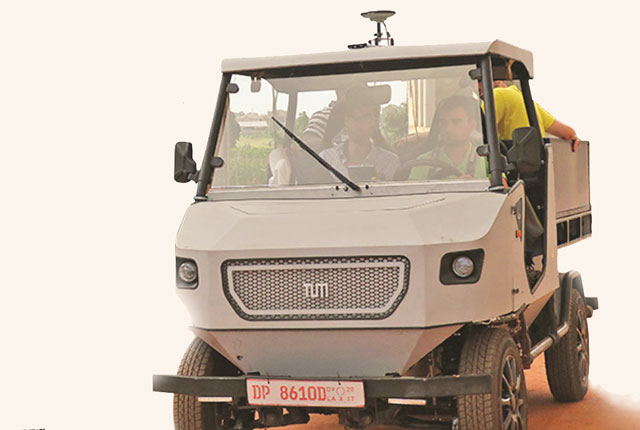
Something needs to happen on the appropriate infrastructure front
TECHNOLOGY | AGENCIES | With a few exceptions, most electric (EV) cars are delicate, expensive creatures designed for paved streets and well-heeled early adopters. And that makes them ill-suited to rural Africa, where many roads are not paved. That’s where the aCar unveiled by the Technical University of Munich last year comes into play. The prototype electric vehicle, the aCar, was designed for both the conditions and uses of rural Africa.
It has a rugged, four-wheel drive design that can handle dirt roads and off-roading. It only has about 50 miles of range, but the very nature of an electric motor makes it both well-suited to clearing obstacles (since it always has full torque) and more reliable. Also, it’s modular — it can switch between carrying passengers and cargo, and you can even use the battery to power a winch or other equipment beyond the car.
The aCar completed real-world tests in Ghana in July last year, and is expected to go into production (eventually in Africa) with a target price of about $11,944 (Approx. Shs45 million). That’s not a trivial expense, but it’s far more affordable than the Nissan Leaf and other vehicles that wouldn’t be as well-suited to the African landscape.
The other challenge, however, will be the effective implementation of appropriate infrastructure to support vehicle sales. Most countries in Africa have not yet built the national grid of EV and plug-in EV (PHEV) charging stations needed.
In South Africa, for example, which is slightly more developed than others; the country’s competing EV manufacturers, BMW and Nissan, signed a memorandum of agreement as early as 2014. But by 2017, the deal had not been implemented. Under the deal, however, the two planned to join forces to build the national grid of EV and plug-in hybrid EV (PHEV) charging stations for use by both Nissan and BMW vehicles.
Charging points for EV cars differ, but options remain the same. The BMWi can be charged from an AC point or public charger at no cost, which would take about three hours to charge from 0-80% and a DC fast charger that takes about 30 minutes.
For personal convenience, a BMW wall box can be installed in the home or an AC occasional cable can be plugged into a domestic socket, which takes eight hours until fully charged.
South Africa has just over 100 BMWi charge points, the majority of which can be found at locations in the big cities. This has resulted in positive sales of the BMWi since the arrival of the i3 and i8 in 2015. Collectively, around 420 BMWi vehicles are being driven on South African roads, with the BMW i8 leading sales. Exports of the Nissan Leaf from Japan came to a grinding halt in 2017 after sales dropped.
EV car dealers attribute the slowdown in sales to a lack of infrastructure such as universal charging points. Since 2014, there have been plans to have the infrastructure for chargers, especially in the Johannesburg area; at shopping centres or at filling stations, which never happened.
South Africa’s central power supplier, Eskom, is reported to be considering its role in developing the eMobility market for the EV. Its options include entering into partnerships with e-mobility stakeholders and government to work on cost-efficient and beneficial models for EVs. It is looking into infrastructure readiness for uptake of EVs, charging infrastructure designs and deployment, ways to improve on optimal charging periods and reduce the increased peak demand periods, and the macro-economic impact studies, and just the overall readiness and upgrading of EVs. While the electric car is cost efficient (in the long term), boasts smart features and emulates the future, it appears as if Africa is not quite ready for.
 The Independent Uganda: You get the Truth we Pay the Price
The Independent Uganda: You get the Truth we Pay the Price




Very Informative!!!Thanks for sharing this information.
Great Article!
The bottom line for me is that electric vehicle chargers need to become more affordable for the domestic market; for example, the grants in the UK ending – more big manufacturing players are entering the market that will drive down prices.
This can only be good for homeowners.
A great EV Article!